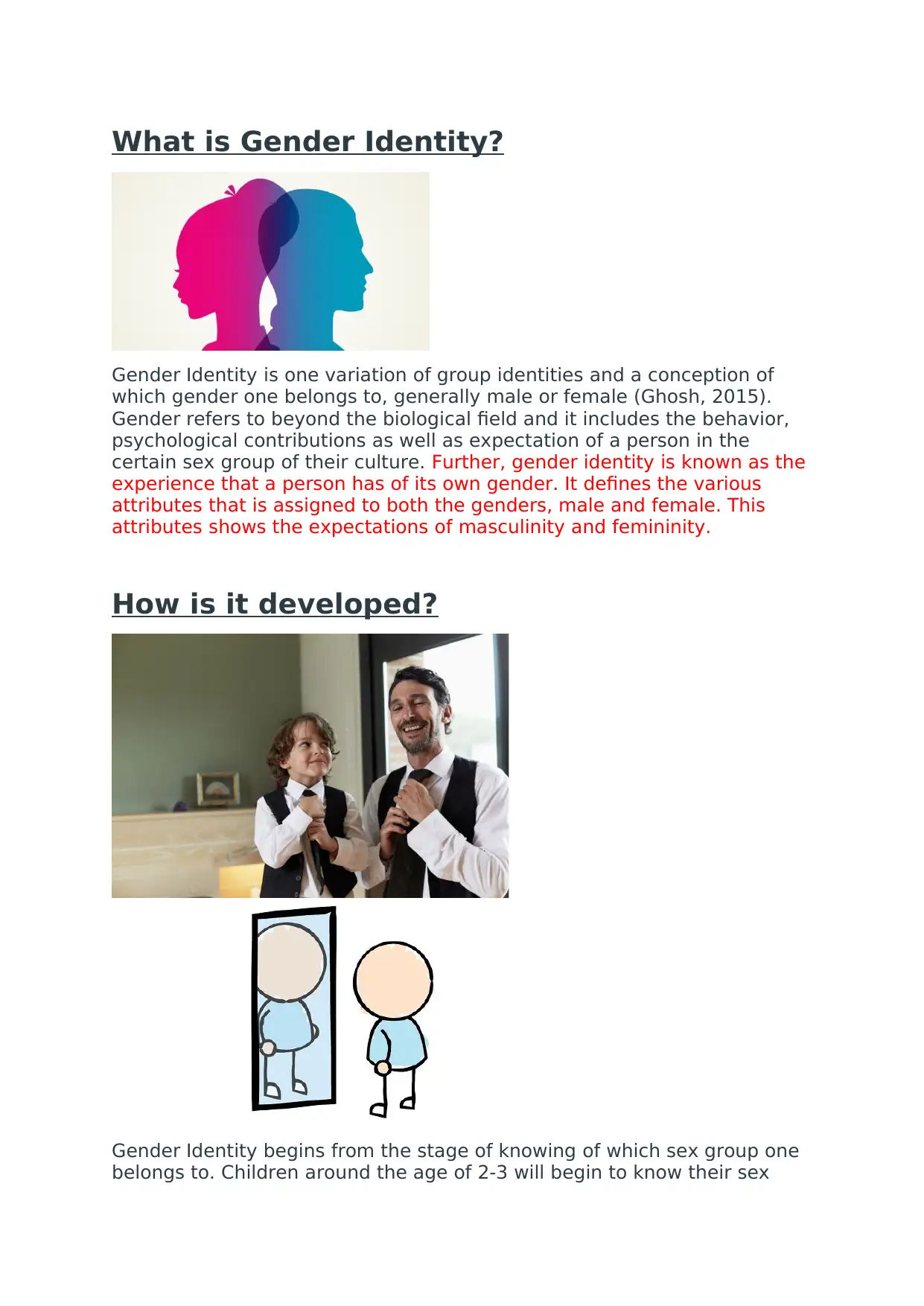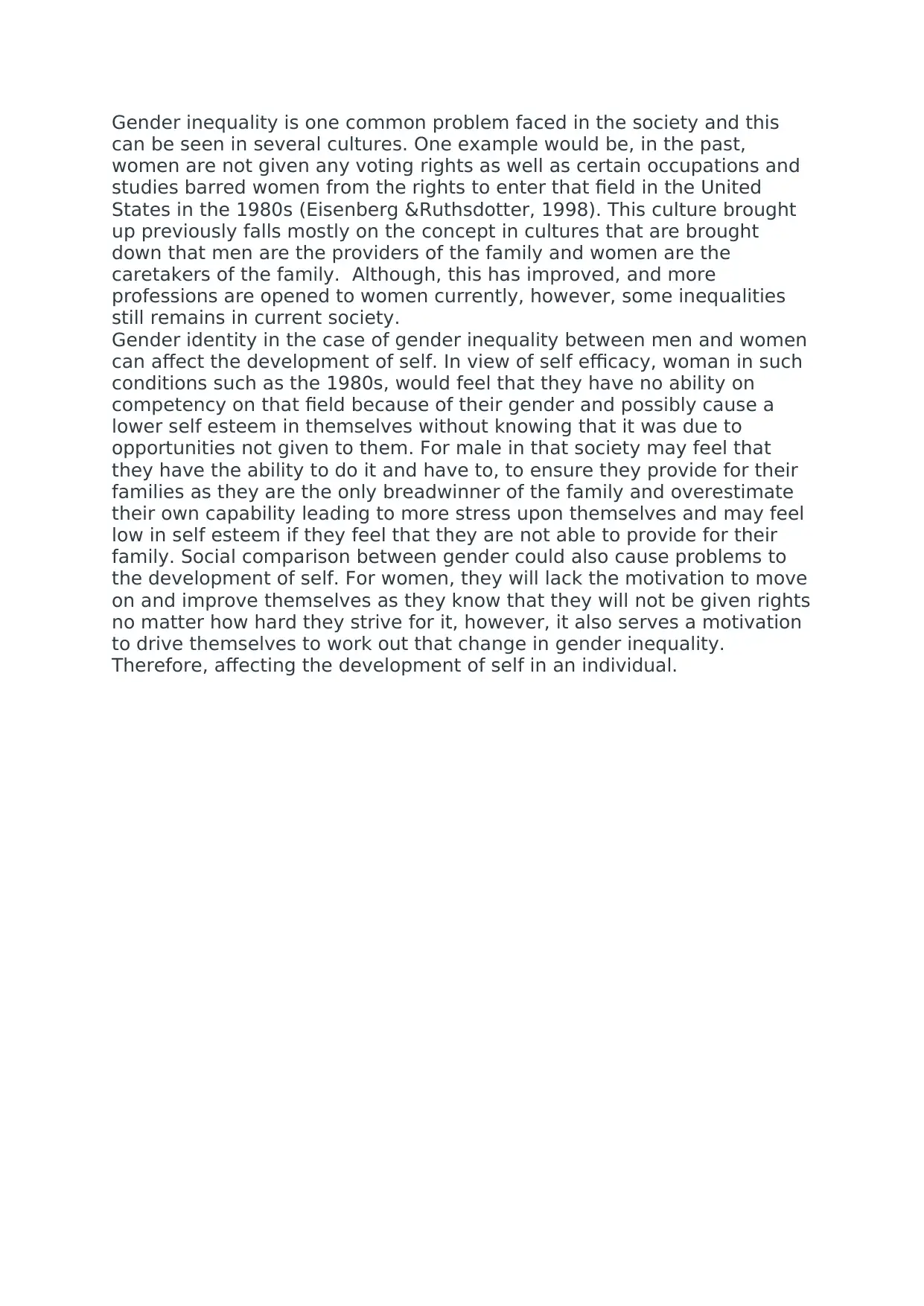SSC113e - Gender Identity: Development, Social Norms and Self
VerifiedAdded on 2023/06/15
|3
|889
|425
Essay
AI Summary
This essay provides an overview of gender identity, defining it as a conception of one's gender, influenced by behavior, psychological contributions, and cultural expectations. It discusses the developmental stages of gender identity, starting from recognizing one's sex around age 2-3 to learning gender roles through imitation and social interactions, referencing Mead's and Cooley's theories. The essay also examines the impact of gender identity on society, particularly concerning gender inequality, using historical examples like women's voting rights and occupational restrictions. It argues that gender inequality can affect self-efficacy and self-esteem, leading to social comparison issues. The essay concludes by highlighting that gender identity and its associated inequalities can significantly influence an individual's development of self, both positively and negatively, by affecting motivation and perceptions of capability. Desklib provides access to similar essays and study resources for students.
1 out of 3










![[object Object]](/_next/static/media/star-bottom.7253800d.svg)